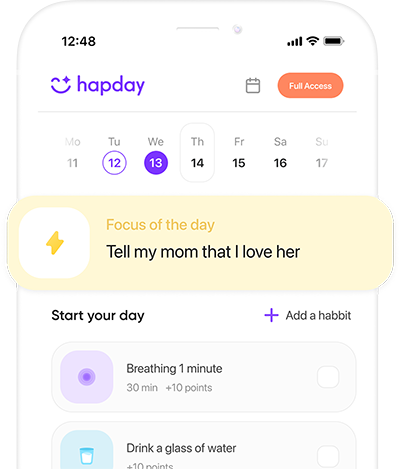Navigating the maze of human relationships, understanding love languages can genuinely change the game. Gary Chapman’s “The Five Love Languages” lit the torch, helping couples comprehend their love expressions and receptions. Yet, why stop at five? Explore the world of 7 Love Languages—an intricate tapestry enriching our understanding of connections. This expanded view invites deeper engagement and comprehension.
Table of Contents
- The Core: Grasping Love Languages
- Diving Back: The Original 5 Love Languages
- Broadening Horizons: The 7 Love Languages
- Words of Affirmation
- Acts of Service
- Receiving Gifts
- Quality Time
- Physical Touch
- Shared Experiences
- Emotional Support
- Cultivating Relationships with the 7 Love Languages
- Final Thoughts
- References
The Core: Grasping Love Languages
What do we mean by love languages? These are unique modes of love expression and perception, deeply rooted in individual quirks and personalities. Knowing your partner’s love language might just be the secret ingredient for a happier relationship. In a revelation from 2016, the Journal of Social and Personal Relationships disclosed that partners attuned to each other’s languages reported much higher satisfaction levels (Bland & McQueen, 2016).
Diving Back: The Original 5 Love Languages
Before expanding our horizons, let’s journey back to Chapman’s original quintet:
- Words of Affirmation: Thank you, I appreciate you.
- Acts of Service: Doing for them what needs doing.
- Receiving Gifts: Thoughtfulness wrapped up in a present.
- Quality Time: Moments spent together with intent.
- Physical Touch: Hugs, pats, a simple touch.
Broadening Horizons: The 7 Love Languages
Adding two more facets enriches the spectrum—an invitation to delve deeper into what love means.
1. Words of Affirmation
Words—it’s an understatement to call them just words—they build, mold, and uplift. For those attuned to verbal affirmations, the impact is profound: Compliments, encouragements, timely appreciations—all boost esteem and fortify bonds.
- How to Speak This Language?
- Say something beautiful daily—it’s transformative.
- Scatter notes of gratitude where they’re least expected.
- Encourage wholeheartedly—it’s more power than you might think.
Lambert et al. (2012) in the Journal of Language and Social Psychology confirmed what we’ve always sensed: gentle words plant the seeds for joyful partnerships.
2. Acts of Service
There’s truth in “actions speak louder than words.” When deeds underscore love, they resonate significantly for those who value this language.
- Ways to Act It Out:
- Share the domestic burdens—it’s partnership incarnate.
- Surprising the stressed? Help without askance.
- Wake up—with breakfast in bed as an act of cherish.
Williamson and Clark (2003) concluded in the Journal of Personality and Social Psychology that such actions cultivate satisfaction and mutual regard.
3. Receiving Gifts
Unwrap sentiments, not just gifts. For some, this is the medium where love thrives. It’s more than material, though—it’s the message.
- Gift-Giving as an Art:
- Pick gifts that echo shared moments or passions.
- A surprise gift? It often says, “I thought of you.”
- Custom creations reflect personal touch—try it.
The Journal of Consumer Research (Ruth, Otnes, & Brunel, 1999) backs up what many believe: gifts deepen emotional outreach.
4. Quality Time
Attention—that’s what matters. For those who value it, time spent means everything.
- Quality Time? Yes, This Way:
- Enshrine date nights—minutes turn into memories.
- Listen, genuinely—nothing says “I care” louder.
- Joint activities cement bonds—create shared stories.
Findings from Sanderson and Cantor (2001) in the Journal of Personality and Social Psychology underscore how shared time nurtures intimacy.
5. Physical Touch
Human touch—it conveys what sometimes words cannot. It’s an embrace of intimacy, beyond the sexual.
- Reach Out:
- Regular touches—simple, meaningful.
- Hold hands—it communicates solidity.
- A massage? Calms and connects on multiple levels.
Gallace and Spence (2010), writing in Neuroscience and Biobehavioral Reviews, found touch lowers stress and fortifies ties.
6. Shared Experiences
Let’s make memories—togetherness etched in time.
- Memories in the Making:
- Discover places anew—adventures await.
- Embark on new hobbies—growth in tandem.
- Celebratory milestones? Let’s make them memorable.
Aron et al. (2000) in the Journal of Personality and Social Psychology observed how shared experiences solidify relational depth.
7. Emotional Support
Be their anchor in the storm, their shelter in times of need.
- Supporting Strongly:
- Listen—empathize, don’t judge.
- Guide but don’t overrule—respect autonomy.
- Stand by, through thick and thin—it’s what matters.
Cutrona and Suhr (1994) noted in the Journal of Social and Clinical Psychology that emotional support is a relationship keystone.
Cultivating Relationships with the 7 Love Languages
These languages, in harmony, transform relationships. Here’s how:
Open Dialogues
Dialogue bridges gaps and amplifies understanding. Talk about your love languages. Gottman and Levenson (1999) emphasized in the Journal of Marriage and Family the role of open conversations in overcoming conflicts.
Being Attuned
Notice their smiles, their silences. It reveals volumes. Finkel and Eastwick (2015) in the Annual Review of Psychology noted that reading non-verbal cues enriches connections.
Practicing Heartfelt Empathy
See through their eyes—it’s transformative. Empathy breeds happiness, affirms a study in the Journal of Personality (Davis, 1983).
Steady Expressions
Consistency builds trust—practice love in its various forms. It’s a long-game strategy backed by Karney & Bradbury (1995) in Journal of Personality and Social Psychology.
Embrace Change
Evolutions occur; so should how we love. Adaptability—the cornerstone of sustained happiness, as noted by Lavner and Bradbury (2010) in Journal of Family Psychology.

